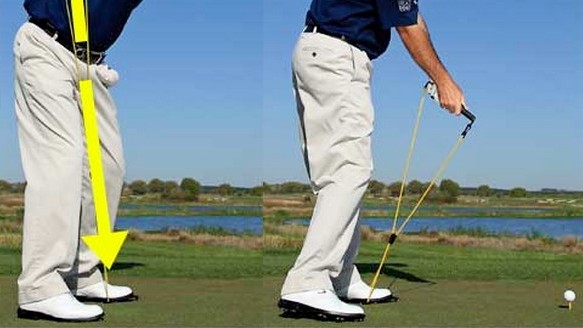Resistance training can help you to experience some of the key feelings we look for in a dynamic, repeating and efficient golf swing. Specifically, this series of drills helps you to eliminate any tendency to collapse the left arm in a ‘narrow’ swing, the left arm breaking down and/or the arms getting too ‘deep’ and behind the body in the backswing. Using the band helps to keep the arm-swing ‘wide’ and in front of you as you stretch it back and through. In so doing, you automatically train the bigger muscles in your body to directly improve the quality of your golf swing.
By Andrew Park
Stretch it out as you create width & coil
When you hear golfers talk about the importance of ‘coil’ and ‘resistance’ in the golf swing they are usually referring to the dynamic in which the upper body turns over the stability and resistance of a solid lower body action. If the hips and legs turned at the same rate as the upper body there would be no coiling effect whatsoever; if they failed to turn at all, the swing would be upper body dominated.
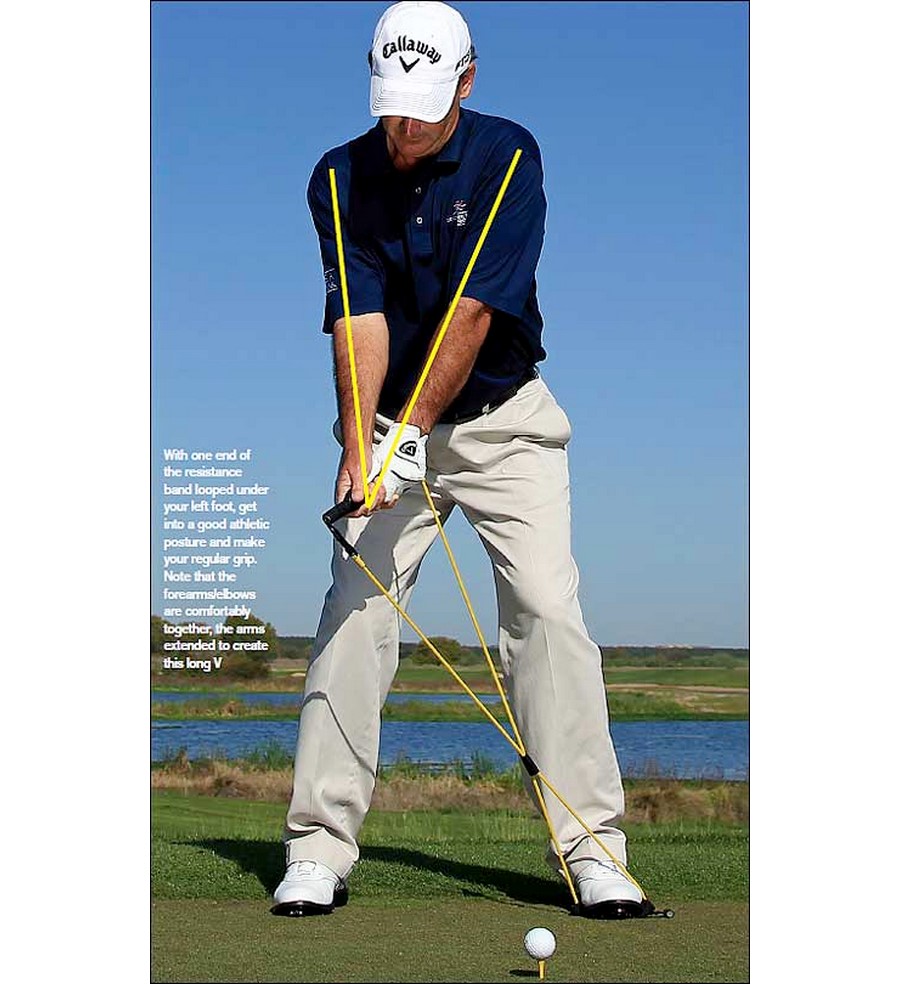
Note that the forearms/elbows are comfortably together, the arms extended to create this long V
And so what we are looking for is the ideal blend of motion between the two halves of the body – i.e. we want the lower body to offer sufficient resistance as to create coil but also a degree of turning to assist in the overall rotation of the body.
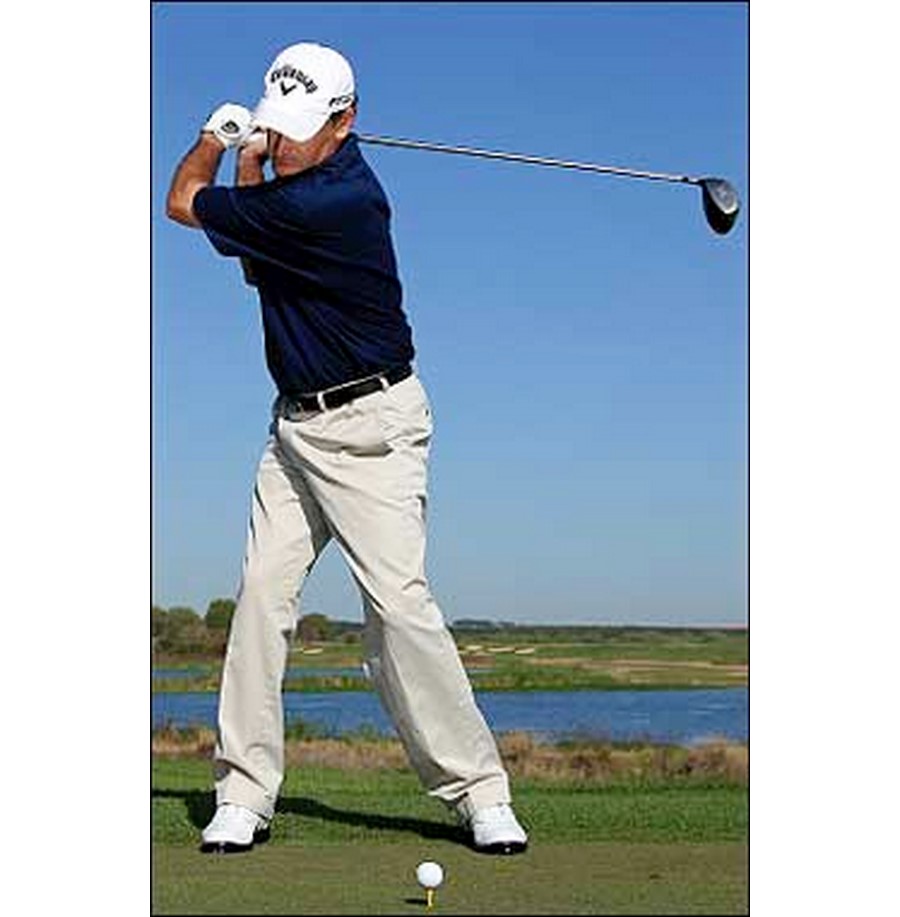
At the same time, you also need width in your swing, and this is achieved with the extension of the left arm in the backswing. This drill gets you working on all of these elements in one easy motion. With one end of the band looped under your left foot, and your hands taking a regular grip, the key is that you initially take up the slack with the hands, arms and shoulders turning together (as per this sequence right). Then, as the hands reach waist high, the resistance is such that the bigger muscles in the upper body have to engage to stretch the band to complete the backswing. Any tendency to collapse the left arm (right photo) and you will fail to stretch the band fully. Thus the full importance of maintaining your width in accordance with coil is understood.

Can you feel the way the bigger muscles in the torso stretch all the way to the top of the backswing?
Keep it controlled & compact
For a repeating, efficient golf swing, we look for this combination of a full shoulder turn and three-quarter length arm swing. This is all you need. The body is nicely coiled, the wrists fully cocked, loaded with energy. Try to hold this position under the stress of the band and you will begin to appreciate the forces that are stored up in a good swing. Remember, the body is the engine that accelerates the hands and arms – which is why improving your body action is the quickest way to developing an accomplished swing.
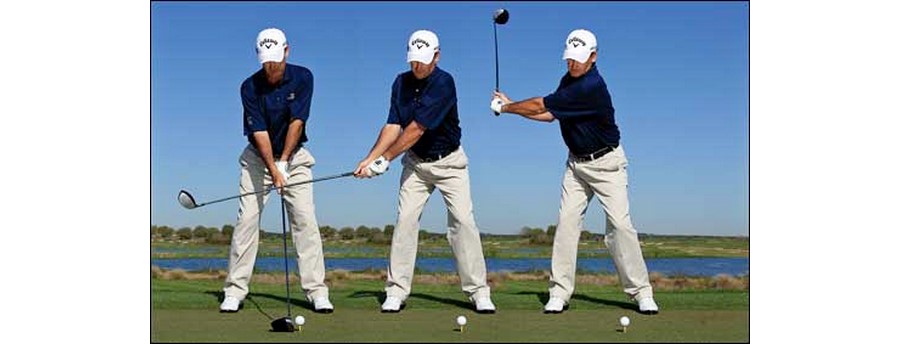

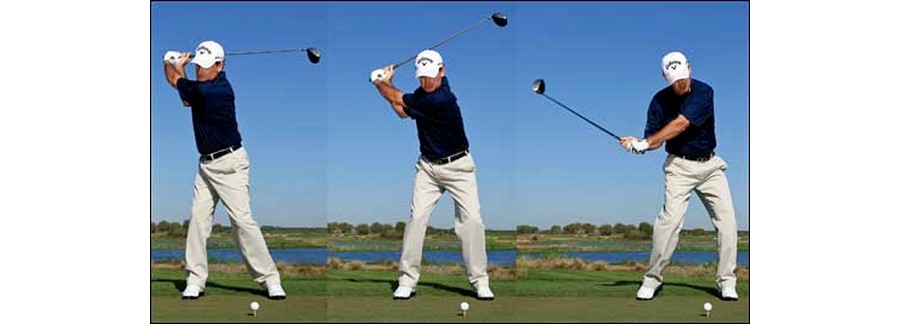
That radius is comfortably maintained as you ease into the downswing.
Width still in evidence as you near impact – wrists about to release

Right arm now taking over to extend width into the follow-through.
Hands arrive behind the head, eyes facing the target
Feel the burn in your torso and abdominal muscles as you hold the
top-of-the-backswing position for a few seconds.That rotation over the
resistance of the lower body is the key to generating speed & power
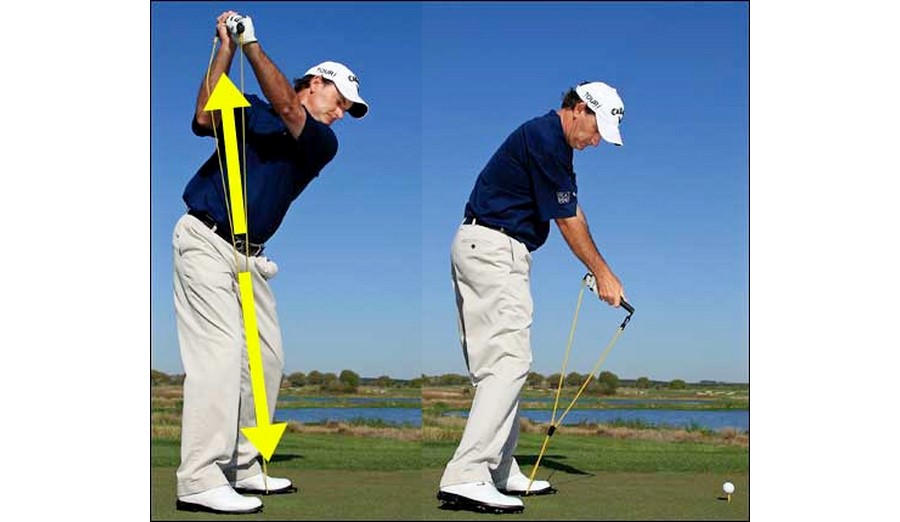
(What you don’t want to see is the hands behind the right shoulder, too‘deep’, trapped behind the body)
Unwinding the body returns the hands/arms to a good impact position and it is the continued rotation of the stomach muscles that generates power through this all-important position
Body core drives the downswing

Note that the wrists re-hinge upwards on their way to the finish.
Driven by the rotation of the body, the hands swing up over the tip of the left shoulder
For the right-handed player, hooking one end of the resistance band under the left foot not only sets you up for a terrific backswing exercise (as per the previous spread), but it then invites you to unwind your body down and through the impact position where you feel and experience the sensation of the abdominal muscles rotating and exerting a tremendous force as you work towards the finish (the left-handed player would hook the band under his or or right foot).
These days you hear a lot about the fitness regime of the world’s top golfers and a lot of that time is spent on developing ‘core’ strength, for the simple reason that power and clubhead speed emanates fromyour body ‘centre’ as you wind and unwind in the swing.
Again, the sequence of images you see across the top of this spread reveal the easy-to-rehearse exercises that you can do yourself at home during the week to tune up your body. From the top of the swing, unwinding to impact is a natural chain of events (once you learn to wind up your body correctly) and as you move through impact the band gives you that resistance to work against. Just pulling with your hands and arms is not enough – only with the correct rotation of your body ‘core’ (i.e. stomach muscles/ abs) will you stretch the band correctly as you rotate to a finish.
Such is the effectiveness of this type of exercise that just 20 minutes in the garden a couple of times a week will make a tremendous difference to the way you swing a golf club, not to mention the improved distance you hit the ball.
Store up the power… and then ‘squat’ and drive, unwinding from the ground upwards
Let me leave you with a final full-swing skills exercise involving nothing more complicated than a football. Combined with the resistance-training drills on the previous pages, this rounds off a comprehensive training session that will go a long way to improving your body motion and quality of swing. The emphasis here is on the leg action, first of all ‘quietening’ the legs in the backswing (thus improving the quality of your coil) before playing a vital role in the transition, the legs stabilising the reverse in direction with a distinct ‘squatting’ action that blends backswing into downswing. This is one of the characteristic moves of good ball strikers as the gears are thrown into reverse and – unhurried – you settle your body into a good hitting position, whereupon the top half can rotate hard and fast through impact.
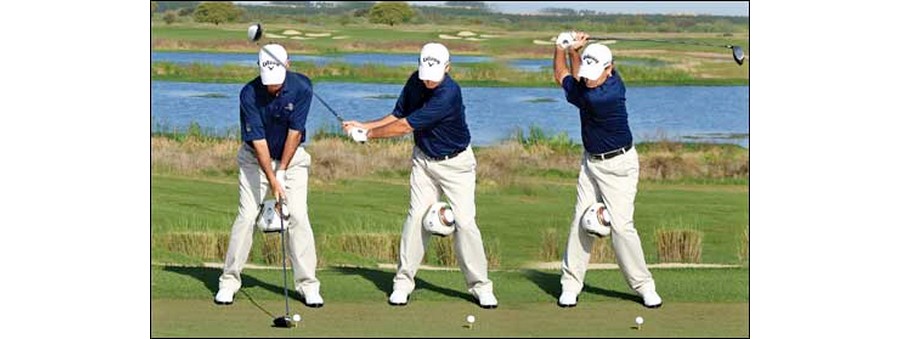
Key is to keep the ball in place as the legs support the full wind-up of the backswing

Right side of the body then free to‘fire’ the club down the target line
